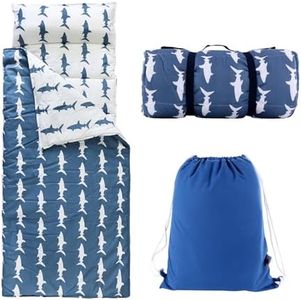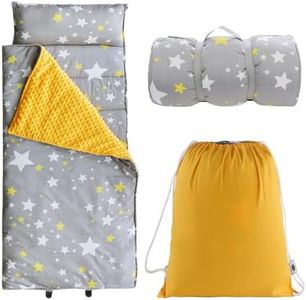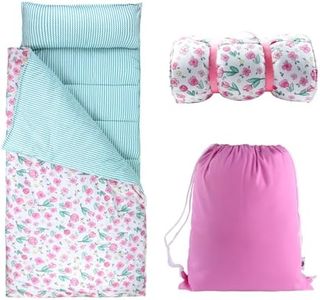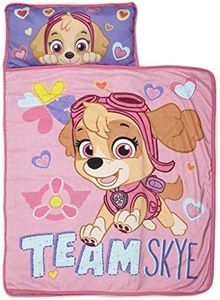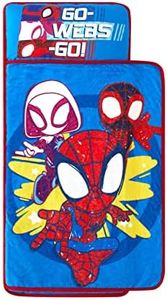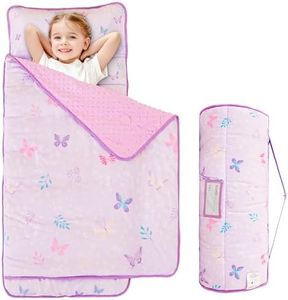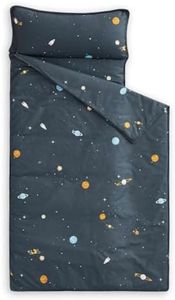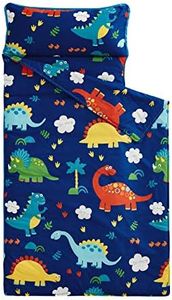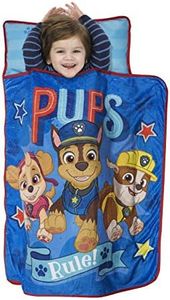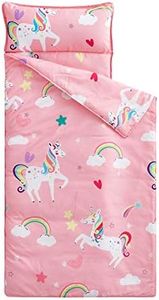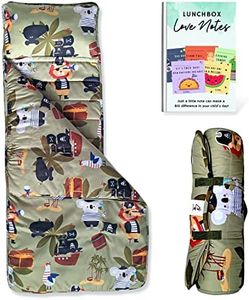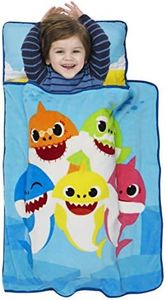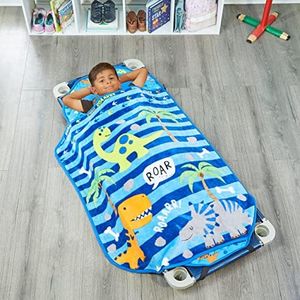We Use CookiesWe use cookies to enhance the security, performance,
functionality and for analytical and promotional activities. By continuing to browse this site you
are agreeing to our privacy policy
10 Best Kids Nap Mats
From leading brands and best sellers available on the web.Buying Guide for the Best Kids Nap Mats
Choosing the right nap mat for your child is about balancing comfort, safety, and practicality. Nap mats are used for daycare, preschool, or even at home, and they help give your child a cozy and consistent place to rest. The best nap mat should be easy to clean, portable, and suited to your child’s age and size. When shopping for a nap mat, consider where your child will be using it most—some mats are designed for group settings, while others are better for home use. Keep in mind your child’s sleeping habits and sensitivities, and look for a design that your child finds inviting.SizeThe size of a nap mat refers to its length and width when laid flat. This is important because you want your child to be able to stretch out comfortably without their feet or head hanging off the edges. Nap mats typically come in sizes that work well for toddlers and young children, but they do vary. Smaller mats are portable and good for younger toddlers who don't move around much when sleeping, while larger mats offer more room, which is better for older kids or kids who are restless sleepers. It's best to pick a nap mat that gives your child space to grow, but still fits well in the sleeping area it will be used (some daycares have size limits).
Padding ThicknessPadding refers to the softness and comfort level of the mat, which is usually measured by its thickness or the type of filling inside. Thicker padding provides more comfort, especially on hard floors, but can make the mat heavier and bulkier to carry. Thinner mats are lighter and easier to roll up but might not be as comfy for longer naps. If your child is sensitive to hard surfaces or naps for a long time, prioritize thicker padding. For occasional or very short naps, thinner mats might be just fine.
Material and FabricThe material and fabric of the nap mat determine how comfortable and durable it will be, as well as how easy it is to clean. Cotton and polyester are common choices; cotton tends to be softer and more breathable, while polyester can be more durable and stain-resistant. Some mats also have waterproof or water-resistant backings, which can help protect against accidents. If your child has sensitive skin or allergies, opt for hypoallergenic and soft materials. If easy cleaning is a top priority, pick a mat with a removable, machine-washable cover.
PortabilityPortability is about how easy the nap mat is to transport. This depends on whether it rolls or folds up and if it has features like carrying handles or straps. Some mats come with attached blankets and pillows that roll up together for convenience. If you expect to move the mat frequently between home and daycare or travel often, look for one that’s lightweight, not bulky, and easy for you or your child to carry.
Built-in FeaturesMany nap mats come with extra features, such as built-in pillows or blankets, Velcro closures, or name tags. Built-in pillows can make the mat more inviting, but check that they're supportive enough for napping. Name tags are useful for daycare to avoid mix-ups. Attached blankets make it easier for your child to settle in without forgetting part of their bedding. Choose features that match your child's preferences and the rules of the place where the mat will be used.
Ease of CleaningEase of cleaning means how simple it is to keep the nap mat fresh and hygienic. Some mats can be tossed into the washing machine, while others might only allow spot cleaning. Children are prone to spills and accidents, so mats with removable covers or those that are fully machine-washable are usually more practical. If your child is likely to get the mat dirty often, prioritize easy-clean options.
Safety CertificationsSafety certifications indicate that the nap mat meets certain standards for flame resistance, non-toxicity, or allergy friendliness. This is especially important for products used by children, as it reduces exposure to hazardous materials. Look for mats that are certified to be free of harmful chemicals or have passed safety tests. If your child has allergies or sensitive skin, these certifications become even more important.

